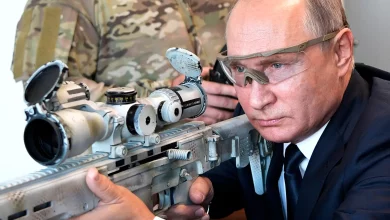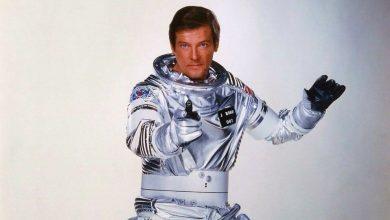Unmasking the Spy Game: Differences between the James Bond and Mission Impossible Franchises
A Comparative Analysis of the James Bond and Mission Impossible Franchises

In the cinematic universe, the realm of action-packed spy thrillers has been dominated by two colossal franchises – James Bond and Mission Impossible. Since their inception, both have enthralled audiences worldwide with their gripping narratives, charismatic protagonists, and breathtaking action sequences. However, despite being a part of the same genre, these franchises boast distinct characteristics that set them apart.
This article ventures into a comparative analysis of the James Bond and Mission Impossible franchises, taking into account various aspects ranging from the main characters and plotlines to their unique cinematic styles and cultural impact. We delve into the intricacies of what makes each franchise stand out, providing insights into their evolution, box office performances, and their influence on the broader genre of spy thrillers.
KEY TAKEAWAYS
- James Bond and Mission Impossible, while both being in the realm of spy thrillers, have distinctive characters, narratives, and stylistic traits.
- James Bond is the embodiment of charm, elegance, and lethal efficiency, while Ethan Hunt is more of a team player, often shown vulnerable yet resilient.
- The Bond movies are standalone adventures, each with a new mission and villain, whereas Mission Impossible follows a more serialized structure with interconnected storylines.
- Both franchises are recognized for their iconic music, use of high-tech gadgets, and have made significant cultural impacts.
- The James Bond franchise has generated a higher gross income at the box office compared to the Mission Impossible franchise.
Characterisation: James Bond versus Ethan Hunt
James Bond
The character of James Bond, crafted by author Ian Fleming, is emblematic. This British Secret Service agent, designated by his code 007, is a symbol of charm, elegance, and lethal efficiency.
- Personality: James Bond is characterised by his debonair charm, suave demeanor, and unflappable courage. He is often seen as a lone wolf who operates mostly independently.
- Skills: A quintessential spy, Bond is equipped with advanced combat skills, unparalleled driving abilities, and a flair for using high-tech gadgets.
- Depiction: Across different movies, Bond has been played by numerous actors like Sean Connery, Roger Moore, and Daniel Craig. Each actor brought a unique flavour to the character but retained the core essence of Bond.
Ethan Hunt
Ethan Hunt, portrayed by Tom Cruise in the Mission Impossible series, is an operative for the Impossible Mission Force (IMF).
- Personality: Unlike Bond, Ethan is not always the suave agent but often appears vulnerable. He is a team player who relies heavily on his IMF team.
- Skills: Like Bond, Hunt is adept in hand-to-hand combat, espionage, and manipulation. His endurance and physical resilience are often highlighted.
- Depiction: Ethan Hunt is exclusively portrayed by Tom Cruise, ensuring a consistent character portrayal throughout the series.
Plot Structure and Themes
James Bond Franchise
The Bond movies often follow a standalone structure. While there is a common thread that links the character’s past, each film introduces a new mission and antagonist. Themes in these movies revolve around global threats, patriotism, and romance.
Mission Impossible Franchise
Unlike Bond films, the Mission Impossible series exhibits a more serialized structure, with storylines often continuing across multiple films. The themes revolve around deceit, betrayal, teamwork, and personal sacrifice.
Cinematography and Music
James Bond films are known for their exotic locations and glamorous aesthetic, while Mission Impossible tends to favor more urban and contemporary settings. The Bond franchise has a signature musical theme, just as the Mission Impossible series is recognized for its iconic theme tune.
Gadgets and Vehicles
Gadgets play a vital role in both franchises. Bond is often equipped with innovative gadgets from ‘Q’ branch, like the Aston Martin equipped with weapon systems. On the other hand, the IMF team in Mission Impossible uses an array of high-tech devices, like lifelike masks for disguise.
Cultural Impact
Both franchises have made significant cultural impacts. James Bond is a cultural icon representing British sophistication and resilience. The Mission Impossible franchise, however, has popularized the theme of impossible missions being achievable through teamwork and ingenuity.
Box Office Performance
Here’s a comparison of box office earnings for both franchises up to the current date.
| Franchise | Total Gross (Worldwide) |
|---|---|
| James Bond | $7.077 billion |
| Mission Impossible | $3.570 billion |
Frequently Asked Questions
1. How has the James Bond franchise evolved over the years?
The James Bond franchise, in its six-decade-long journey, has seen a significant evolution in its narrative style and character portrayal. Initially, the films were primarily centered around Cold War themes, reflecting the geopolitical context of the time. Bond was portrayed as a suave and invincible secret agent, encapsulating the machismo ideal of the era.
However, as the franchise progressed and societal attitudes shifted, so too did the depiction of James Bond. The later films, especially those featuring Daniel Craig, show a more nuanced and vulnerable Bond. This has added depth to the character, making him more relatable. Furthermore, the films began addressing contemporary issues, such as cyber-terrorism, making them more relevant to modern audiences.
Also, while maintaining its signature action sequences, the franchise has diversified its cinematic techniques. This can be seen in the visually stunning single-shot fight scenes in “Spectre” and the intense chase sequences in “Skyfall. These reflect a more contemporary and innovative approach to action filmmaking, aligning with current cinema trends.
2. How does the depiction of female characters differ between the two franchises?
The portrayal of female characters in both franchises has followed a somewhat similar evolution trajectory. In the initial James Bond films, women often played the roles of ‘Bond girls’, appearing as romantic interests for Bond or as damsels in distress. They were often defined by their attractiveness and were frequently involved in Bond’s exploits but rarely held influential positions.
The recent Bond films have shown a more progressive attitude towards their female characters. Characters like Vesper Lynd in “Casino Royale” and M in multiple films are shown to have significant agency and influence over the narrative. They are complex characters with their motivations and arcs, moving beyond being mere accessories to Bond.
In contrast, the Mission Impossible franchise has maintained a consistent approach towards its female characters. While there are certainly romantic interests for Ethan Hunt, many female characters, such as Ilsa Faust, are portrayed as capable agents in their own right. They play essential roles within the team, contributing significantly to mission success. However, it’s worth noting that the gender dynamics within both franchises still reflect the broader industry trends and societal attitudes towards gender roles.
3. How does the humor in James Bond films compare to that in the Mission Impossible franchise?
Humor plays a different role in each of these franchises. In James Bond films, humor is often used to underline Bond’s charm and cool-headedness in the face of danger. Bond’s quick-witted one-liners, usually delivered in the heat of action, are a staple of the franchise. The humor is often dry, sophisticated, and delivered with a British understatedness, reflecting Bond’s personality.
In contrast, the humor in Mission Impossible films is usually more straightforward and often stems from interactions between team members. The camaraderie between the characters allows for humorous exchanges, often used as a relief from high-stakes tension. Characters like Benji Dunn, played by Simon Pegg, provide comic relief, and there’s a lighter tone to the humor, reflecting the franchise’s more team-oriented dynamic.
4. How have the villains in each franchise evolved over time?
Villains in both franchises have undergone significant evolution. Early Bond villains, such as Dr. No or Goldfinger, were larger-than-life figures with extravagant plans for world domination. As the franchise has progressed, the villains have become more complex and personal. They often have intricate backstories and personal connections to Bond, creating a more psychological form of conflict.
In contrast, the Mission Impossible franchise started with a mix of personal and impersonal villains. As the series progressed, the villains became more personal to Ethan Hunt and his team. This was a shift from the largely anonymous and institutional threats of the earlier films, contributing to the increasingly serialized nature of the franchise.
5. How do the action sequences in James Bond and Mission Impossible compare?
Action sequences are a cornerstone of both franchises, with each taking a distinct approach. James Bond films often feature a mix of car chases, hand-to-hand combat, and large-scale set pieces. The action scenes often balance practical effects with CGI and maintain a somewhat grounded sense of reality, despite their grandiosity.
Mission Impossible, on the other hand, is known for its daring stunt work, often performed by Tom Cruise himself. These stunts, including scaling the Burj Khalifa or hanging onto the side of a flying plane, add a visceral thrill to the action sequences. While the franchise also utilizes a mix of practical effects and CGI, the emphasis on practical stunts lends a unique authenticity to its action scenes.
6. What role does technology play in each franchise?
Technology plays a crucial role in both franchises, often serving as a plot device or a tool for the protagonists. In the James Bond films, ‘Q’ branch provides Bond with a variety of high-tech gadgets, ranging from weaponized cars to watches with hidden features. These gadgets often have a sleek, elegant design in line with Bond’s sophisticated persona.
In contrast, the Mission Impossible franchise features a more diverse range of technology. This includes everything from complex hacking tools to lifelike masks used for impersonation. The technology often leans towards the more futuristic, reflecting the franchise’s more modern and forward-thinking aesthetic.
7. What are the iconic moments in each franchise?
Both franchises have numerous iconic moments. In the Bond franchise, the gun barrel sequence, Bond’s introduction (“Bond, James Bond”), and the car chase in “Goldfinger” are some of the most memorable. They have come to define the series and are synonymous with the character of Bond.
In the Mission Impossible franchise, the ceiling descent scene in the first film, the Burj Khalifa climb in “Ghost Protocol”, and the HALO jump in “Fallout” are particularly iconic. These moments, often centered around Ethan Hunt’s death-defying stunts, have come to represent the high-stakes thrill and audacity of the franchise.
8. How does the scoring in each franchise contribute to their distinct identities?
Music plays a crucial role in defining the identity of both franchises. The James Bond films have a signature theme, composed by Monty Norman, which has been remixed and revisited in different films. The franchise also features original songs performed by various artists for each film, which often reflect the mood and theme of the respective film.
In contrast, the Mission Impossible franchise is recognized for Lalo Schifrin’s iconic theme tune, with its distinctive 5/4 time signature. This theme, like the Bond theme, has been revisited and remixed in each film. While the franchise doesn’t feature original songs like the Bond films, the scoring often complements the intense, high-stakes nature of the missions.
9. How do the opening sequences of the films in each franchise compare?
The opening sequences in both franchises play a key role in setting the tone for the rest of the film. James Bond films usually start with a high-octane action sequence, followed by a stylized title sequence accompanied by the film’s theme song. These sequences are often visually striking, with a unique aesthetic for each film.
Mission Impossible films, on the other hand, often begin with a mission briefing for Ethan Hunt, setting up the plot of the film. This is usually followed by an action sequence that sets the pace for the rest of the film. The title sequence, featuring the burning fuse, is another iconic element, setting the suspenseful tone for the upcoming mission.
10. How have the franchises influenced each other?
While each franchise has a distinct identity, they have inevitably influenced each other over the years. The success of the Mission Impossible franchise’s team-based dynamic and serialized storytelling can be seen in the recent Bond films, with a greater focus on recurring characters and plot continuity.
Similarly, the global appeal and timeless charm of the Bond franchise have influenced Mission Impossible. The series has incorporated more exotic locations and grand set pieces, reminiscent of the Bond films. Despite their distinct identities, both franchises continue to shape and redefine the spy thriller genre, drawing inspiration from each other while maintaining their unique elements.
CONCLUSION
The comparison between James Bond and Mission Impossible provides a fascinating insight into the rich tapestry of the spy thriller genre. Both franchises, while sharing a common thematic underpinning, offer unique perspectives and styles that cater to different audience preferences. They not only encapsulate the evolving cinematic trends and societal attitudes but also continue to redefine the standards for the spy thriller genre.
James Bond and Mission Impossible have each carved out their niche, contributing to their enduring popularity and cultural significance. Their impact on the spy thriller genre is undeniable, and they continue to enthrall audiences worldwide with their captivating narratives, memorable characters, and breathtaking action. As these franchises continue to evolve, one can only anticipate the new heights they will reach in the world of cinema.








